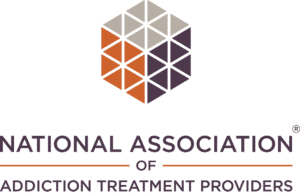From Social Drinking to Addiction: The Stages of Alcoholism
For many people, drinking alcohol is a normal part of social life. Whether it’s enjoying a glass of wine at dinner, celebrating a special occasion with champagne, or unwinding with friends at a bar, alcohol is often seen as a way to relax and have fun. However, what begins as casual drinking can sometimes escalate into a serious problem. The transition from social drinking to alcoholism is often gradual, making it difficult to recognize when drinking has become more than just a habit.
Understanding the stages of alcoholism can help individuals identify whether they or someone they love is struggling with an unhealthy relationship with alcohol. Alcoholism is not just about drinking too much; it is a progressive disorder that affects both mental and physical health. By recognizing the warning signs early, individuals have a better chance of preventing long-term consequences and seeking help before it’s too late.
What Is Alcoholism?
Alcoholism, also referred to as alcohol use disorder (AUD), is a chronic condition where an individual struggles to control their drinking despite negative consequences. It affects brain chemistry, decision-making abilities, and overall behavior, leading to dependence on alcohol. Many people assume that alcoholism only applies to those who drink daily, but even those who binge drink on weekends or engage in periodic heavy drinking can develop the disorder.
Alcoholism is characterized by intense cravings, an inability to stop drinking, and physical dependence. Those suffering from alcoholism may continue drinking even when it interferes with work, relationships, and personal health. Over time, they may develop tolerance, requiring more alcohol to feel its effects, which further fuels the addiction. The most dangerous aspect of alcoholism is that many people remain in denial about the severity of their drinking habits until they experience serious health issues or life-altering consequences.
What Is Considered Heavy Drinking?
Many people assume that they are in control of their drinking because they do not drink every day. However, what is considered heavy drinking is based on the total amount of alcohol consumed over time. According to the Centers for Disease Control and Prevention (CDC), heavy drinking is defined as more than 15 drinks per week for men and more than 8 drinks per week for women.
Binge drinking is another pattern of excessive alcohol consumption that can indicate a drinking problem. Consuming five or more drinks in a single occasion for men, or four or more for women, is considered binge drinking. While some may view binge drinking as harmless social behavior, it can quickly develop into alcohol dependence. Over time, those who drink heavily experience increased tolerance, making it harder for them to feel the same effects, which leads them to drink even more. This cycle is one of the early signs that drinking is becoming problematic.
The Four Stages of Alcoholism
Alcoholism does not happen overnight. It develops gradually, often beginning with what seems like harmless drinking. As drinking patterns intensify, individuals progress through different stages that ultimately lead to severe addiction. Understanding these stages of alcoholism can help people recognize where they stand and seek help before irreversible damage occurs.
Early-Stage Alcoholism: Increased Tolerance
In the early stages, drinking appears normal, and no obvious signs of a problem exist. People in this phase may start drinking more frequently, whether it’s having a drink after work every night or regularly indulging in more alcohol than intended. One of the most significant changes in this stage is the development of tolerance. This means that an individual needs more alcohol to achieve the same effects they once felt with smaller amounts.
During this phase, many drinkers believe they are still in control. They may not experience major consequences, but they might find themselves making excuses to drink, such as using stress, social obligations, or celebrations as justification. The line between casual drinking and dependence is subtle, and many individuals do not recognize they are moving toward alcoholism at this point.
Middle-Stage Alcoholism: Dependence Begins
As drinking continues, individuals begin to develop dependence. This means that their body has adapted to regular alcohol consumption and begins to experience withdrawal symptoms when they stop drinking. These symptoms may include anxiety, irritability, shakiness, nausea, or sweating.
At this stage, alcohol becomes a necessity rather than a choice. Individuals may start drinking earlier in the day or find themselves thinking about alcohol even when they are not drinking. Relationships may begin to suffer, and work performance can decline as alcohol starts interfering with daily responsibilities. Many people in this stage try to cut back or quit drinking but find themselves unable to do so, leading to frustration and a growing sense of helplessness.
Late-Stage Alcoholism: Physical and Mental Decline
As alcoholism progresses into the later stages, both the body and mind begin to deteriorate. Drinking is no longer a social activity but a necessity for functioning. Individuals at this stage may experience frequent blackouts, memory problems, and cognitive impairment.
Health problems also become more pronounced. Liver damage, high blood pressure, digestive issues, and a weakened immune system are common. Mental health suffers as well, with many experiencing severe anxiety, depression, or suicidal thoughts. The consequences of drinking become harder to ignore, but by this point, quitting without medical intervention can be dangerous due to severe withdrawal symptoms.
End-Stage Alcoholism: Severe Health Consequences
End stage alcoholism is the most dangerous phase, where individuals experience serious health complications. Many people in this stage suffer from liver failure, heart disease, brain damage, and even alcohol-induced dementia. Physical appearance also changes, with noticeable weight loss, jaundice, and frailty.
At this stage, hospitalization or long-term medical care is often necessary. Many individuals lose their jobs, homes, or relationships due to their addiction. Without treatment, end-stage alcoholism can be fatal, but recovery is still possible with professional support.
Physical Signs of Alcoholism
Long-term alcohol use causes visible changes in a person’s body. Some of the physical signs of alcoholism include facial redness, broken capillaries, and tremors. Many people also experience chronic fatigue, digestive problems, and unexplained weight loss. Other signs may include excessive sweating, a bloated appearance, and frequent illnesses due to a weakened immune system. These physical symptoms indicate that alcohol has begun to affect the body seriously, and medical intervention may be necessary.
Alcohol Fatigue Syndrome and Long-Term Effects
One of the lesser-known effects of chronic alcohol consumption is alcohol fatigue syndrome. Many people who drink heavily experience constant exhaustion, brain fog, and difficulty concentrating. This occurs because alcohol depletes the body’s energy levels and affects sleep quality. Over time, this leads to chronic fatigue, overwhelming even simple daily tasks.
The long-term effects of alcoholism extend beyond fatigue. Individuals may develop permanent brain damage, heart disease, and organ failure. The damage caused by excessive drinking is often irreversible if not treated early.
Seeking Help for Alcoholism at Silicon Valley Recovery
If you or someone you love is struggling with alcoholism, the most important step is seeking help. Silicon Valley Recovery offers comprehensive treatment options, including medical detox, therapy, and long-term support. Recovery from alcohol addiction is possible with the right guidance, and no one should have to face it alone. Seeking help is not a sign of weakness – it is the first step toward a healthier, more fulfilling life.
FAQ
What are the different levels of alcoholism?
Alcoholism progresses through four stages: early-stage (increased tolerance and social drinking), middle-stage (dependence and withdrawal symptoms), late-stage (loss of control and health decline), and end-stage (severe health complications, including organ failure).
What is the 1/2/3 rule for drinking?
This guideline suggests 1 drink per hour, 2 drinks per occasion, and 3 drinks per week maximum to maintain responsible drinking habits and avoid dependence.
What is the 80-20 rule in alcohol?
It states that 80% of alcohol is consumed by 20% of drinkers, highlighting that heavy drinking is concentrated on a small percentage of the population.
How many drinks a day is considered an alcoholic?
Heavy drinking is defined as more than 4 drinks per day or 14 per week for men, and more than 3 per day or 7 per week for women. Consistently exceeding these limits may indicate alcoholism.
What are the early warning signs of alcoholism?
Early signs include increased tolerance, drinking to cope, withdrawal symptoms, prioritizing alcohol over responsibilities, and unsuccessful attempts to cut back. Seeking help early can prevent serious consequences.









